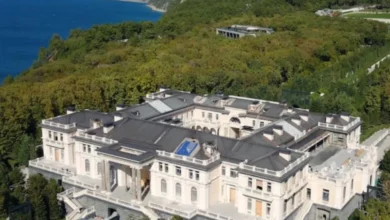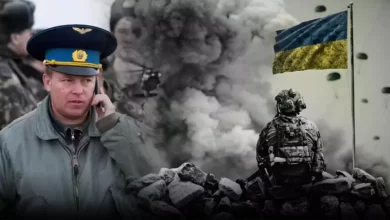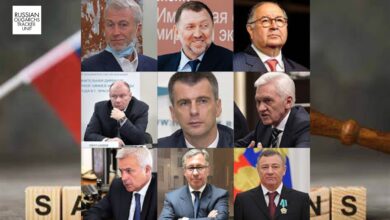Russian Oligarchs Art Collections: Wealth, Controversy, and Connections
The Role of Russian Oligarchs Art Collections for Cultural Destruction in War Crimes When one contemplates acts constituting war crimes, they encompass a spectrum of offenses ranging from the murder and torture of both soldiers and civilians, acts of rape, hostage-taking, and the forced displacement of populations, all the way up to the heinous crime of genocide.
Yet, these atrocities are not confined solely to human suffering; they also encompass the deliberate devastation of civilian infrastructure, including churches, factories, schools, and residences. What often goes unnoticed, but is equally significant, is the destruction and theft of a nation’s cultural heritage, which includes its priceless art.
Interestingly, it was Roman Rudenko, the principal Soviet prosecutor at the Nuremberg Trials, who made the case against “crimes that manifested as the destruction of cultural institutions, the pilfering and obliteration of cultural treasures, and the stifling of the national cultural life in territories temporarily occupied by German forces.”
Since 1954, a revised Hague Convention has provided a comprehensive explanation for categorizing the destruction or theft of cultural artifacts as a war crime. This convention aims to eliminate unique cultural identities, as exemplified in the case of Ukraine’s distinct nationhood, as opposed to being an imperial Russian province. The underlying premise appears to be that if the cultural heritage vanishes, so does Ukraine itself—a notion that eerily parallels the actions of the Nazis in occupied Poland and elsewhere.
Contemporary Ukraine: Plundering National Treasures Continues After Russian Invasions
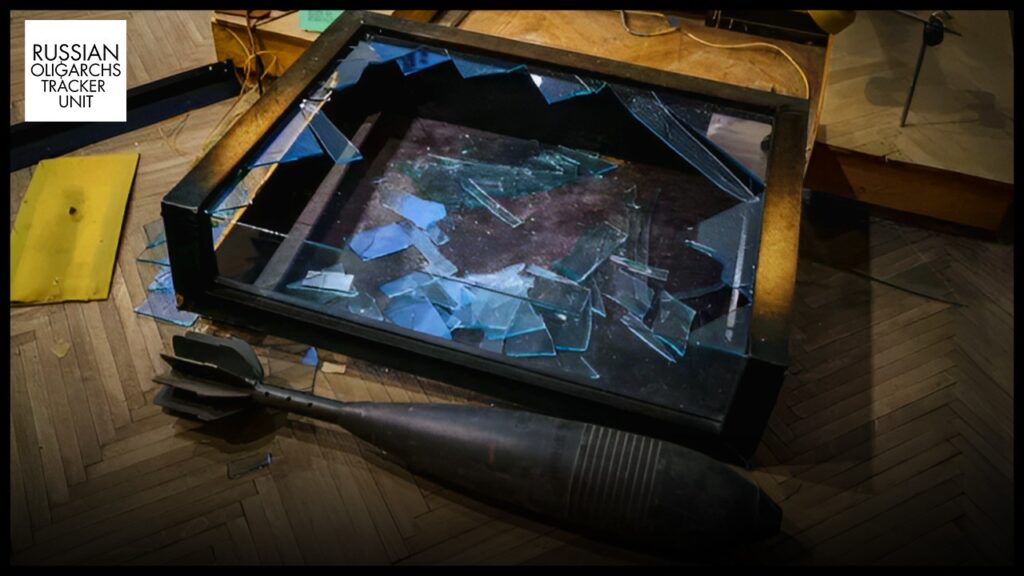
In the present day, following the Russian invasions that occurred between 2014 and 2022, Ukrainians are enduring the devastating consequences of the destruction and theft of their cultural heritage. In 2014, Russian forces targeted 90 museums in the Crimean peninsula, absconding with valuable artifacts and artworks. Additionally, Russian archaeologists exploited the massive Kursk Bridge construction project to pillage ancient burial mounds. Notably, Russia’s parliament played a role in this illicit activity by decriminalizing looting through amendments to the criminal code.
The aftermath of the February 2022 invasion saw no respite for museums within occupied Ukraine, as state-directed looters continued to operate with impunity. For instance, in Kherson, a city under occupation for eight months, these looters managed to remove a staggering 10,000 out of the 14,000 items housed in the city’s main museum, leaving only empty glass display cases for disheartened curators.
One individual who possesses a deep understanding of these grim circumstances is Pavlo Kulyk, a 40-year-old artist who transitioned from a career in painting (which included 410 days of frontline service in the army) to oversee the War and Art program within the government agency responsible for enforcing sanctions—the National Agency on Corruption Prevention (NACP). To explore Kulyk’s artwork, his Saatchi Gallery webpage provides access to his paintings.
Kulyk emphasizes that while Ukraine’s most pressing concern is the necessity to employ military force to neutralize the threat posed by Russia, it is equally important to recognize that the “bear’s stomach” also plays a role in resource extraction and exploitation.
Influence of Russian Oligarchs Art Collections in Ukraine’s Art Recovery Missio
Russian oligarchs play a crucial role in sustaining a Mafia-like regime in Russia, effectively replacing conventional state institutions. The system heavily relies on President Vladimir Putin’s continuous allocation of spoils to both winners and losers, making the collaboration of these oligarchs essential for its functionality. Those who refuse to engage in this high-stakes game often find themselves in exile, behind bars, or meeting grim fates.
The Responsibilities of Kulyk’s Team
Kulyk’s team has undertaken two significant tasks as part of Ukraine’s art recovery efforts. First, they aim to create a digital catalog documenting the stolen antiquities and artworks looted with the assistance of Russian experts from military and FSB operations. These records have also been integrated into the Art Loss Register based in London, consisting of over 700,000 items. This registry serves as a valuable tool for law enforcement, insurers, and galleries globally, hindering the sale of suspicious artifacts and artworks.
The Stolen Treasures
The looted items encompass a wide range, from ancient Scythian gold helmets and swords to the bejeweled diadem once worn by Attila the Hun. The Scythian artifacts hold particular significance, given that nomadic cultures like theirs left minimal traces of material culture. Attila the Hun, known for his secrecy, went to great lengths to conceal his tomb, which remains undiscovered. Russian operatives have also laid their hands on rare early medieval Byzantine icons and their precious frames, whether these were displayed in churches or museums.
Mariupol’s Loss
In Mariupol, Russian occupiers seized valuable landscapes created by Pontic Greek artist Arkhip Kuindzhi (1841-1910). These artworks had been hidden to safeguard them from the fate that befell the city’s museum—a Russian airstrike. Paintings like “Autumn” and “Red Sunset” now reside in Russia, while much of Mariupol lies in ruins.
Ukraine’s Call to Action
Ukraine is not only adding stolen Ukrainian art to the substantial restitution bill that the Russian state will ultimately face when the war concludes but is also urging the international community to consider Putin’s circle of affluent enablers as frontline participants. This includes oligarchs who have amassed vast industrial and banking assets through Putin’s patronage. Their immense wealth extends beyond lavish residences in London and luxury yachts; it also encompasses valuable artworks, from Fabergé eggs to paintings by Lucian Freud, which are easily transportable.
Art as Social Currency
For Russian oligarchs, collecting art is a form of social currency, facilitating their integration into European society through gallery donations and exhibition sponsorships. This cultural involvement prompts some to question whether these influential figures are better suited to being subjects of artworks, like those created by Francis Bacon.
Disrupting Oligarchs’ Art Wealth
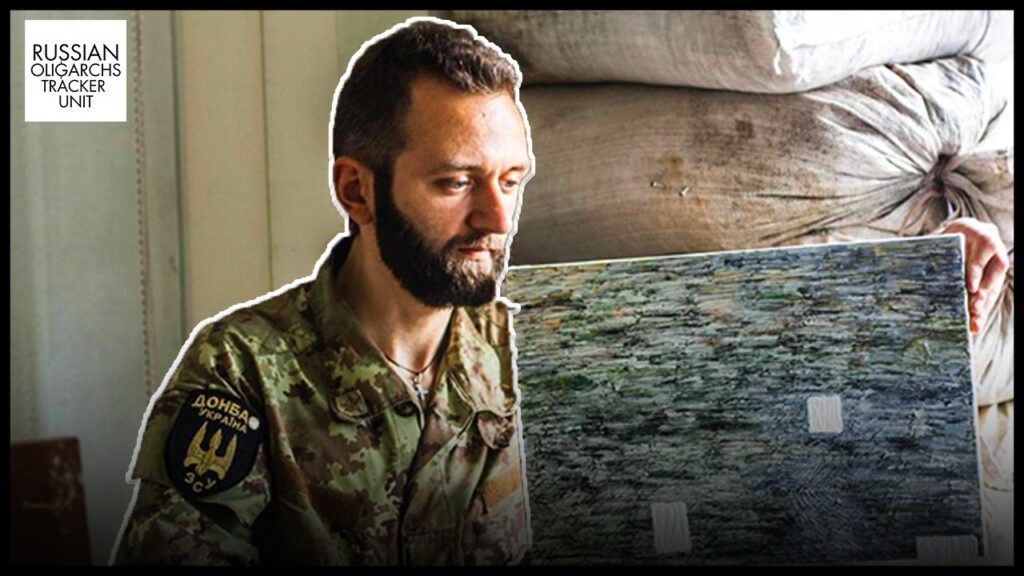
Although confiscating such conspicuous wealth may be challenging, it is possible to disrupt its value on the international market, even when oligarchs resort to proxies and dubious intermediaries to evade banking sanctions. In essence, the works of art themselves can face a significant depreciation in value.
Russian Oligarchs’ Vast Art Collections and Their Controversial Connections
Some Russian oligarchs possess extensive art collections that were acquired before the events in Crimea and the subsequent invasion of Ukraine. To showcase their impressive troves, individuals like Roman Abramovich, along with his former spouse Dasha Zhukova, established the Garage Museum of Contemporary Art in Moscow. Additionally, Abramovich boasts ownership of exceptionally costly artworks by Bacon and Freud.
Viatcheslav Kantor, a prominent figure in the fertilizer industry, also contributes to Moscow’s art scene with his Museum of Avant-Garde Mastery. This institution houses a remarkable assortment of artworks by renowned artists such as Delaunay, Modigliani, Chagall, Rothko, and Soutine, as well as various esteemed Russian and Ukrainian painters.
Despite any claims to the contrary, Kantor’s involvement in Jewish organizational activities and his efforts to improve Putin’s image as a “philosemite” cast a shadow over his supposed detachment from the ongoing war. Putin himself has alleged that President Zelensky operates as a Western puppet concealing a regime of “neo-Nazis.” Kantor is presently engaged in a campaign to extricate himself from several sanctions lists.
In response to these developments, Pavlo Kulyk has compiled a database containing information about art owned by sanctioned Russian oligarchs. This collection is valued at over $2 billion and continues to grow. These funds, if reclaimed, could potentially be used for humanitarian purposes, such as restoring churches, schools, and housing. Some argue that these oligarchs place greater importance on their art collections than their opulent residences in Knightsbridge and luxurious yachts in Nice or Sardinia. Consequently, it should be a source of shame for anyone in the Western art world to engage with Russian oligarchs or their intermediaries, given the murky dealings that often characterise this realm.
Unless the art world seeks to associate itself with nefarious elements, it ought to consider the ethical implications, much as it would if art and artefacts were sourced from regions under ISIS control, such as Mosul or Palmyra. In those instances, greed was intertwined with a destructive lust for cultural heritage, reminiscent of the concerns surrounding Russian oligarchs’ art collections.




